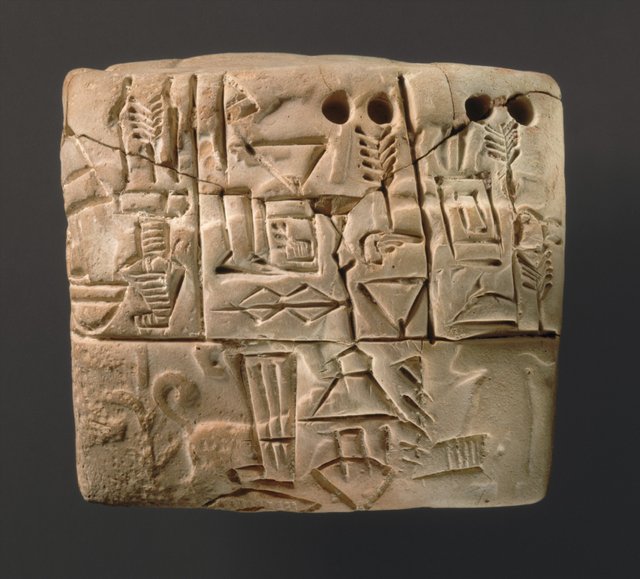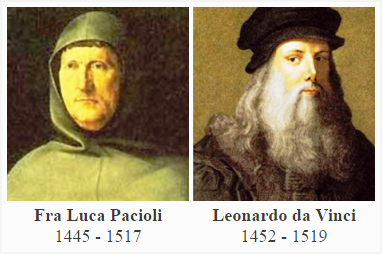Hiking Up Mount Blockchain — Are You Ready?

Photo by Daniel Leone
Hello there and welcome to the start of our journey. The massive and awe-inspiring Mount Blockchain is right in front of us. We just arrived at the basecamp and are about depart on the hike of a lifetime.
Lots of courageous people before us have hiked up different challenging mountains, but nobody so far managed and dared to try climbing to the peak of this giant in front of us. We will draw on the experience of the many brave and ingenious explores before us, taking in their expertise and use them for our own journey.
It’s going to be a challenging hike up the mountain, sometimes with steep inclines, but do not despair, together we will get up this monster, overcome the obstacles and weather the unknown.
But before we’re heading out and take on the colossal Mount Blockchain laying ahead of us, we will go over our plan once more.
We are currently at the basecamp, checking our tools, maps, and equipment. We will need a lot to get to the peak, but we will be very thorough and carefully go from camp to camp, until we make it to the top. So pay close attention, this is our battle plan:
Hiking Up Mount Blockchain — Are You Ready? (This article)
’83 | The Birth Of Digital Cash (Being written right now)
’96 | Oncologist + Gold = Revolution? (In planning)
’97 | Anybody interested in some hash(cash)? (In planning)
’98 | Wei Dai — Who dat? (In planning)
’98 | Make it rain (digital) gold! (In planning)
’08 | Bit what? Bitcoin! — Hello world. (In planning)
’13 | The World Computer (In planning)
9… There is a lot more in planning, so stick around and I´ll make sure to update this as soon as possible (:
As you can see, we have quite a way ahead of us, but despair not, slowly we will get there, one article after the other. You know what they say (be warned, it is about to get cheesy!):
“Just keep swimming. Just keep swimming. Just keep swimming, swimming, swimming. What do we do? We swim, swim.”
— Dory, from Finding Nemo
Ever swam up a mountain? If not, you better get ready! And you have no idea how beautiful the view will be from the peak — so rest assured that all the sweat and tears will be worth it.
Once we’ve reached the top, it will be rewarding to look back on the journey and to be able to connect the dots, see how our hardships all finally lead up to successfully getting to the peak. From there, we will see where the next adventure is waiting for us.
Since this is the first article in a long series of posts, I’d like to take some seconds to explain to you how this will play out. During the articles I’ll make sure to link to sources and at the end of each post I’ll include a list of links that you can make use of to still your hunger for more information. Also please feel free to comment, post any remarks or questions that you have and I’ll try my best to provide you with a, hopefully, satisfying answer.
But now let’s get finally started with the big question — why are we even doing this hike, what’s so special about Mount Blockchain?
What’s with all this fuss about blockchain?
“I’ve been at this 35 years, writing about the digital age. I’ve never seen a technology that I thought had greater potential for humanity.”
– Don Tapscott, Writer
Before we can start to understand what has everybody raving about blockchain, it is indispensable to take a step back and zoom out so we can properly see and understand the bigger picture.
Throughout the history of our species, there has been one distinct feature that enabled us to thrive and slowly establish our hegemony over the world. It’s definitely not due to any of our physical abilities, as there are countless animals that have way better sight, exceptional hearing, a superior sense for smells, etc…. Many even have senses that go way beyond our common conception of senses — to give you some examples, bumble bees detect flowers by using their little hairy legs to feel the flower’s negative electromagnetic field and pit vipers can see infrared light aka they have built-in night googles.
It is rather our unique ability to create complex imaginary stories within groups, that enable us to cooperate with each other in a highly effective manner. The narratives that we tell each other create the web of stories that make up our modern world — for example our notion of nation states, universal human rights, corporations and the value of money. For they are nothing more than mere stories and have no physical embodiment in our world, as they are not made up out of any atoms or molecules.
In order for these stories to function properly, there is a special kind of glue needed — trust. When we look at the great scheme of things, humans started to band together and over time formed ever larger groups of people. This works well up to a group size of about 150 people (this is called Dunbar’s number). When we stay inside the magical number of 150 people, the relations between the members and the gossip ensuring social cohesion is sufficient. But with groups that are larger that this, it gets really messy. Therefore some sort of governance structure structure was need and centralized institutions were a great tool to accomplish that.
By building upon these centralized institutions, we as a species were extremely efficient in conquering the planet (for the better or the worse) and create an effective system of cooperation.
Instead of the need to trust one another that we really are who we claim to be, we nowadays trust the government to provide a trusted source of identification (IDs, passports, driver’s licences, etc.). We trust the banks to ensure that nobody is simply adding some zeros to their bank accounts or that someone spends her money twice (this is also known as the double spend problem, we’ll cover this in a later article). The list of centralized institutions that we put our faith in to guarantee trust between each other, goes on and on…
And what’s the beauty that all these systems have in common and share?
Ledgers.
Yupp, boring old ledgers. (If beg your pardon if you’re an account who happens to read this, I’ll make up for it in the coming paragraphs!)
Ledgers have played and continue to play an extraordinarily important role in the development of modern societies. Without them, we wouldn’t be where we are today. They are literally the foundation of our civilisation.If you don’t believe me, just look at the archeological findings of some of the first written accounts that were found in Mesopotamia 3.200 B.C.

Administrative account of barley distribution by Metropolitan Museum of Art
On these clay tables, the ancients Mesopotamians recorded taxes, payments, worker pay and private wealth. By recording all these types of events, many of which are out one’s own memory, things became less error prone and more efficient. These administrative records made the system seem fairer, more systematic and trustworthier. In combination with the advent of writing and money, ledgers enabled groups to conduct business with other groups and to from larger settlements. By keeping track of the exchange of goods and services, a rapid expansion of societies was spurred.
Since ledgers help to deal with trust and complexity, they form a societal memory. A true revolution in the way we keep records came out of Italy in the year 1494, when two smart guys published a book with the sexy title “Summa de arithmetica, geometria, proportioni et proportionalita”. The authors? An Italian mathematician called Fra Luca Pacioli and his bestie Leonardo da Vinci! In it they proposed and described something that would change the world — double entry bookkeeping. (while the origins of the idea are not clear, they were the first to describe in a book and to thus make it available to a big audience).
Yes you read that right.
Double entry bookkeeping changed the world. (if you want to get into the nitty gritty details of the history of double entry bookkeeping, be my guest)

Best buddies
This new way of recording stuff on ledgers, paved the way for the foundation of our modern world, by greatly expanding the capacity for exchange between people.
But for now we will let history be history and come back to our initial question:
What’s with all this fuss about blockchain?
The main thing a ledger does is establishing an accepted standard of truth (note that of course it’s impossible to ever come close to something such as absolute or universal truth!).
There are certain problems when it comes to centralized ledgers though. In a supercalifragilisticexpialidocious (yes, thats a word) world, we would have not to worry about the institutions that exert control over these ledgers.
Unfortunately, this isn’t the case though. Centralized ledgers have many potentially problematic aspects, such as the question who controls what is being recorded and what is being changed on the ledgers. In countries with reliable and functional structures, this often does not pose a problem. But in some areas of the world that is not the case and thus makes the system prone to errors, manipulation and outright fraud.
Another big problem is that centralized databases (aka ledgers) with a lot of sensitive and valuable information are becoming very attractive goals for hackers. If you follow the news you’ll surely notice that there is a never-ending series of hacks, such as the latest facebook hack, the British Airways hack or the infamous Equifax hack.
Then in the midst of the financial crisis and the global meltdown of the economy, something happened. Something that would have the revolutionary potential to change everything.
Blockchain enters the stage for the first time in 2008, when Satoshi Nakamoto releases his/her/theirs whitepaper on bitcoin. In the not too distant future we will take a thorough look at Bitcoin, so I won’t go into any details here. By now, Bitcoin has been making headlines all around the world and if you haven’t lived under a rock somewhere in the middle of nowhere, you’ve heard about it.
The revolutionary idea that got lots of people very excited can be summed it very dry in the following sentence:
“Blockchain is a so called distributed ledger technology, which means that a shared ledger of synchronized authenticated digital data is kept in a decentralized manner and cryptographically secured.”
-UK Government Office for Science (2015)
During our hike up the mountain I will make sure to untangle this behemoth of a dry, unappealing sentence and will try to serve the individual aspects to you in appetizing little snack bites. For now, the most important thing that you need to understand and to grasp is the following.
We have found a way to ensure trust between different parties.
And as explained above in the beginning of this text, that’s a really big thing. That’s the quintessence of all the fuss.
How exactly this almost magical thing is achieved, will be covered in later articles. For now, here is an awesome and fairly short video (~9min) that showcases industries that are affected by this new technology, just so you can get a glimpse into the broad importance of this new thing.
Blockchain technology is still a very nascent field and nobody is really sure where it is heading towards, but the excitement is real and a lot of very smart and intelligent people are working relentlessly around the globe to work on innovative and sometimes revolutionary ideas centered around this new decentralized paradigm.
In the upcoming articles I´ll get into some of the most important foundational ideas and precursors to the advent of blockchain technology, so stay tuned. We will go into the technological foundations afterwards and then look into the application of blockchain within different industries and different settings (think blockchain and artificial intelligence for example!)
And to finish this post up, as already stated above, please feel free to comment, pose any questions you might have (I’ll try my best to answer them) or say whatever is on your mind.
Until very soon & yours truly
Till
Links for further reading:
More weird senses in the animal kingdom:
https://www.wired.com/2016/06/weirdest-senses-animals-humans-dont/
More on the history of ledgers:
https://medium.com/unraveling-the-ouroboros/a-brief-history-of-ledgers-b6ab84a7ff41
More on distributed ledger technology:
More in real world use cases of blockchain:
https://medium.com/@matteozago/50-examples-of-how-blockchains-are-taking-over-the-world-4276bf488a4b
Congratulations @tillberlin! You received a personal award!
Click here to view your Board
Do not miss the last post from @steemitboard:
Vote for @Steemitboard as a witness and get one more award and increased upvotes!
Congratulations @tillberlin! You received a personal award!
You can view your badges on your Steem Board and compare to others on the Steem Ranking
Do not miss the last post from @steemitboard:
Vote for @Steemitboard as a witness to get one more award and increased upvotes!